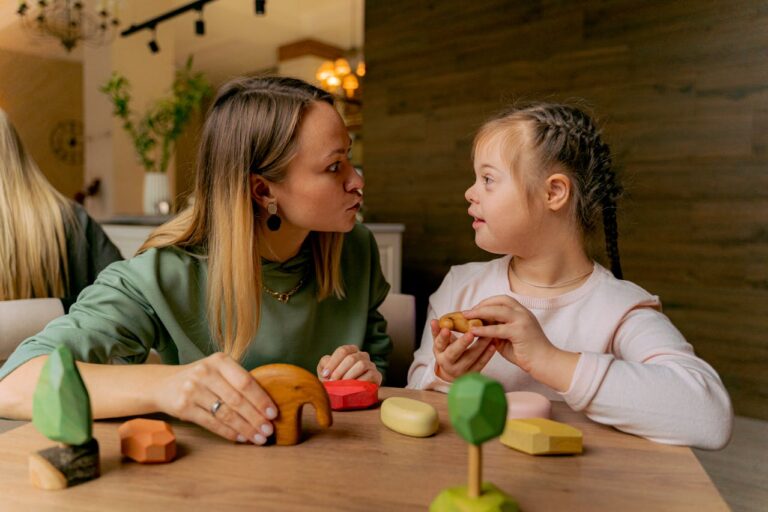Building effective study habits can often feel like an uphill battle for students. Yet, there’s a strategy that stands out for its simplicity and effectiveness—positive reinforcement. This psychological principle, often linked to behavior management, can help students stay motivated, focused, and persistent in their academic pursuits.
If you’re a parent, teacher, or even a student seeking ways to improve learning outcomes, this blog explores how positive reinforcement can be a game-changer. Discover why it works, how it fosters stronger study habits, and actionable tips to incorporate it into your daily routine.
What is Positive Reinforcement?
Positive reinforcement is the practice of rewarding desirable behaviors to encourage their repetition. Rooted in behavioral psychology, it capitalizes on our innate desire for rewards—whether it’s praise, recognition, or tangible incentives.
For instance, when a student completes a challenging assignment and receives praise or a small treat, their brain associates the hard work with positive outcomes. This increases the likelihood that they’ll repeat the behavior.
Why Positive Reinforcement Works in Study Habit Formation
Positive reinforcement excels at making learning enjoyable and rewarding. Here are three key reasons why this approach resonates, especially for students.
1. Builds Motivation Over Time
Positive reinforcement nurtures intrinsic motivation—the internal drive to succeed. When students consistently receive positive feedback for their efforts, they associate studying with personal fulfillment and accomplishment, transforming it from a chore into an enjoyable pursuit.
Example: A high schooler who is rewarded with words of encouragement like “Great job finishing your homework before dinner!” might begin to feel pride in staying ahead of their schedule.
2. Encourages Consistency
Good habits are built through repetition, and positive reinforcement offers the encouragement needed to stay consistent. With regular rewards or recognition, students are motivated to stick to their study routines and meet their goals.
Example: Rewarding a child with extra playtime for completing their daily reading assignment helps them stay consistent with their reading habit.
3. Reduces Negative Associations
Many students associate studying with stress or boredom. Positive reinforcement creates an alternate narrative, highlighting the rewards and benefits of hard work. This approach shifts focus, ensuring students see studying as an opportunity rather than an obligation.
Example: A student dreading math practice may develop a positive attitude after consistently receiving praise for each milestone achieved, such as mastering a new concept or solving a tricky equation.
How to Use Positive Reinforcement to Enhance Study Habits
Now that we’ve seen why positive reinforcement works, here’s how you can make it a part of a student’s daily learning routine.
Step 1. Set Clear and Attainable Goals
Before applying positive reinforcement, it’s vital to establish clear goals. Whether the objective is studying an hour every day or improving test scores, having measurable goals helps determine when to reward.
Example Goal for Younger Kids: “Complete your spelling exercises before dinner.”
Example Goal for Teens or Adults: “Write two practice essays this weekend.”
Step 2. Choose Rewards that Resonate
A reward only works if it has value for the recipient. Understand what motivates the student—this could be verbal praThe Power of Positive Reinforcement in Building Study Habitsise, extra screen time, their favorite snack, or even a well-earned break from chores.
Examples of Rewards:
- Younger Kids: Stickers, playdates, or small toys.
- Teenagers and Beyond: Extended curfew, movie nights, or a digital subscription they’ve had their eye on.
Step 3. Focus on Effort, Not Just Results
While it’s tempting to reward only outcomes, such as getting an A on a test, focusing on effort is equally important. Recognizing their dedication reinforces persistence, even if the results aren’t perfect.
Example Praise: “I’m so impressed by how hard you studied for this exam—you’re developing a habit that will serve you for life!”
Step 4. Avoid Overuse of Rewards
The Power of Positive Reinforcement in Building Study HabitsStriking a balance is key. Overusing rewards can dilute their impact and shift the focus from intrinsic motivation to external incentives. Ensure that rewards remain special rather than expected.
Tip: Combine rewards with constructive conversations about why their efforts matter.
Step 5. Make Feedback Immediate
The sooner students get positive reinforcement after completing a task, the stronger the association with the behavior. This immediate feedback creates a direct link between their hard work and the rewards.
Example Scenario:
- Immediate Rewards: “That’s an amazing essay you just finished! How about a quick treat from your favorite café to celebrate?”
- Delayed Rewards: “If you keep up this pace for the week, we’ll plan something fun this weekend.”
Step 6. Create a Supportive Environment
Positive reinforcement works best in a nurturing and supportive environment. Surround students with role models who encourage them to do their best. Whether it’s parents modeling good habits or teachers celebrating wins, a positive atmosphere amplifies results.
Example: If a teacher recognizes a student’s improved study habits with a small reward in front of their peers, it fosters a sense of accomplishment and builds confidence.
Real-Life Examples of Positive Reinforcement in Action
Here are some practical scenarios that showcase how positive reinforcement can transform study habits.
- Case 1: A middle school student dislikes completing history homework. Their parents introduce a system where finishing each assignment on time earns points that can be redeemed for a family game night. Within weeks, the student not only completes assignments on time but also starts enjoying the subject.
- Case 2: A high school teacher creates a classroom leaderboard showcasing students who improve their quiz scores each week. Instead of embarrassment, students feel motivated to see their names climb higher.
- Case 3: An adult learner studying for an online certification keeps track of daily study hours. For every 10 hours completed, they reward themselves with a small gift, such as a new book or a virtual coffee break with a friend.
Making the Most of Positive Reinforcement
Building strong study habits isn’t a sprint—it’s a marathon that requires patience and consistency. Positive reinforcement can be a powerful tool to sustain motivation and make the process enjoyable.
Key Takeaways:
- Tailor rewards to eaThe Power of Positive Reinforcement in Building Study Habitsch individual’s preferences.
- Focus on progress and effort, not just results.
- Be consistent, but avoid overusing rewards.
Whether you’re a student building better habits or a mentor looking to inspire, positive reinforcement paves the way for growth without pressure.
Reinforce Success, One Step at a Time
The key to effective study habits lies in consistency and motivation. Positive reinforcement offers a proven way to turn studying from a challenge into an achievable, even enjoyable, part of daily routines.
If you’re ready to unlock your or a student’s full potential, start small and stay consistent with your chosen rewards. Need further advice or strategies on education and learning? Explore more blogs or courses on our platform to keep growing and thriving!





















0 Comments